
Twice-baked soufflés with Gruyère and cheddar
- Published: 31 Aug 14
- Updated: 18 Mar 24
Soufflés are among the kitchen’s greatest challenges. Try our soufflé recipe (and memorise our tips for success) for a method that will work every time.
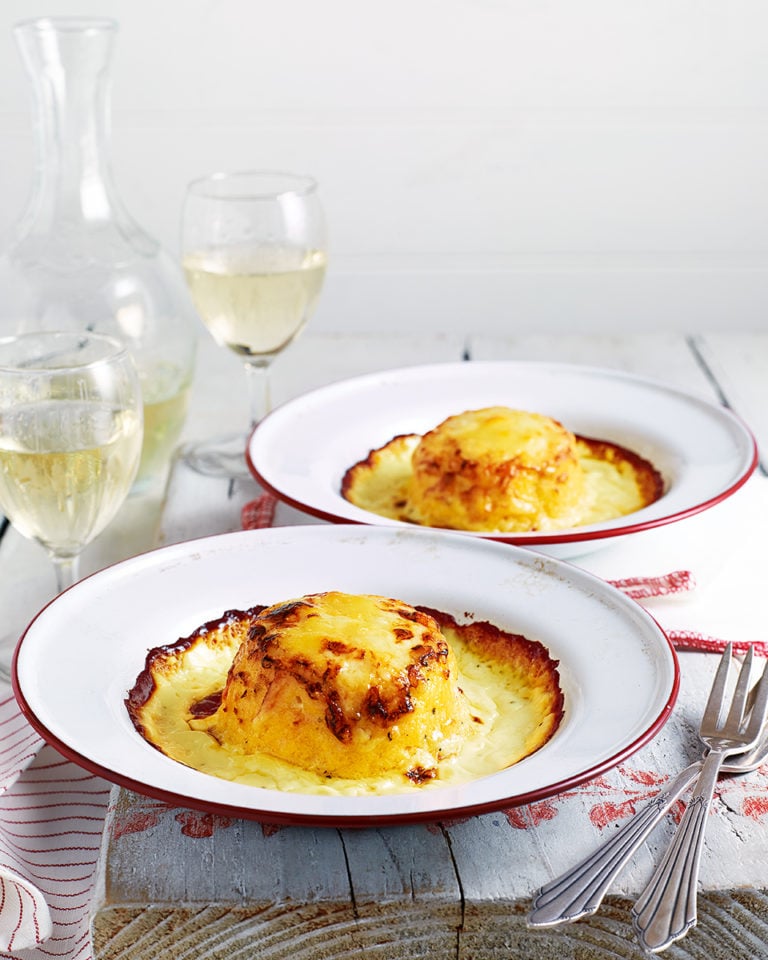
-
Serves 6 as a starter
-
Hands-on time 40 min, oven time 25 min, plus cooling, chilling and standing
Ingredients
- 40g unsalted butter, plus extra for greasing
- 290ml whole milk
- ¼ onion
- Pinch freshly grated nutmeg
- 40g plain flour
- Pinch English mustard powder
- Pinch cayenne pepper
- 50g extra-mature cheddar, grated, plus extra to sprinkle (see tips)
- 70g gruyère, grated, plus extra to sprinkle (see tips)
- 4 medium free-range eggs (see tips), separated
- 200ml double cream
You’ll also need
- 6 x 175ml ramekins or metal pudding moulds
- Large metal spoon or balloon whisk
- Deep roasting tin
Method
- Generously butter 6 x 175ml ramekins or metal pudding moulds. Heat the oven to 180°C/fan160°C/ gas 4 and put a full kettle on to boil. Heat the milk in a saucepan with the onion and nutmeg until steaming. Remove and discard the onion.
- Melt the butter in another pan, then stir in the flour, mustard powder and cayenne. Bubble for 3-4 minutes, stirring, until the mix smells biscuity (see tips).
- Add the infused milk bit by bit, stirring constantly until the mix is smooth and thick – don’t add it quickly or it’ll take longer to thicken.
- Remove the pan from the heat, then leave to cool for 5-10 minutes. Mix in the cheddar, gruyère and the egg yolks. Season well.
- Put the egg whites in a clean, dry mixing bowl and, using a balloon whisk or electric hand mixer, whisk to medium peaks – the peaks should hold but the tips curl over when the whisk is lifted out. Fold into the cheese mixture: start with 2 tbsp to loosen the mix, then fold in the rest in thirds, using a metal spoon or balloon whisk (see tips). Spoon into the ramekins/moulds, filling them two-thirds of the way up.
- Stand the ramekins/moulds in a deep roasting tin. Carefully pour the water from the just-boiled kettle into the tin so it comes halfway up the sides of the ramekins/moulds. Gently transfer to the oven and bake for 15 minutes or until golden and set but still with a slight wobble. Leave the soufflés to cool – they’ll sink a bit, but don’t worry.
- Once the soufflés are cool, run a knife around the edges to loosen, then tip them upside down on to the flat palm of your hand (give the ramekin/mould a good shake to release if needed). Put the soufflés upside-down on a baking tray, then chill (see tips).
- Half an hour before you want to eat, heat the oven to 220°C/fan 200°C/gas 7 and take the soufflés out of the fridge to let them come back to room temperature (see tips). Put each soufflé in a small ovenproof serving dish. Season the cream, then pour it over the soufflés to cover. Sprinkle over the extra grated cheeses – how much is up to you, but we recommend being generous. Bake in the oven for 10 minutes or until the cheese is melted and starting to crisp. Serve straight from the oven so the soufflés don’t sink.
- Recipe from September 2014 Issue
Nutrition
- Calories
- 440kcals
- Fat
- 39.1g (22.6g saturated)
- Protein
- 14.7g
- Carbohydrates
- 8.1g (3g sugars)
- Fibre
- 0.4g
- Salt
- 0.6g
delicious. tips
Try to find free-range eggs with large, orange yolks. We like Clarence Court Cotswold Legbar eggs, from Waitrose, Sainsbury’s, Ocado and independents – they give the soufflés a beautiful, deep golden colour.
Use the most mature cheese you can find – you want a good kick of cheesiness rather than just a hint, and eggs tend to absorb favour. You can vary the cheese or cheeses you use – just make sure they’re good melting cheeses. For an extra-rich dish, you could crumble blue cheese over the top of the soufflés in step 8 before reheating them.
Make sure you bubble the flour and butter mixture in step 2 for a good 3-4 minutes, because the relatively low oven temperature may not be hot enough to cook out the raw taste of the flour.
The flavour of these cheese soufflés is classic but, for a variation, try stirring in finely chopped fresh herbs with the cheese and egg yolks in step 4. Chives, parsley, thyme or rosemary all work well.
When folding in the whites in step 5, use either a traditional metal spoon or a balloon whisk – the surface area on a balloon whisk is smaller, which means less air is knocked out. If you use a whisk, be gentle – it’s about lifting and folding the mixture, not whisking it.
These soufflés are rich, so serve with a sharp salad of bitter leaves, dressed with red wine or sherry vinegar, sea salt and a little olive oil.
Prepare the soufflés to the end of step 7, then chill for up to 6 hours before you finish the recipe.
Best is a crisp, young white bordeaux.
Buy ingredients online
Rate & review
Rate
Reviews
Share a tip
Subscribe to our magazine
Food stories, skills and tested recipes, straight to your door... Enjoy 5 issues for just £5 with our special introductory offer.
Subscribe
Unleash your inner chef
Looking for inspiration? Receive the latest recipes with our newsletter

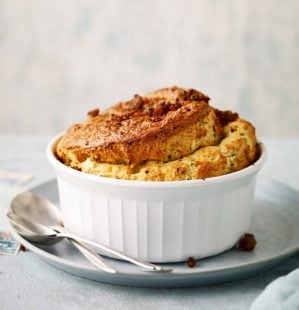

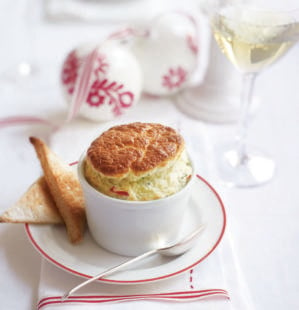
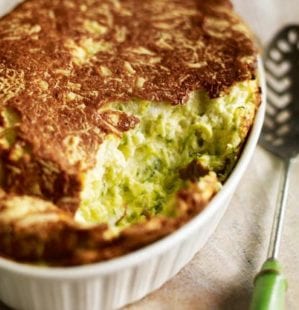
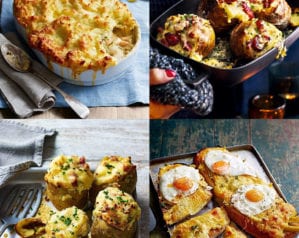
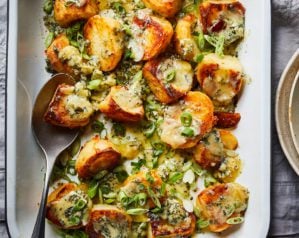
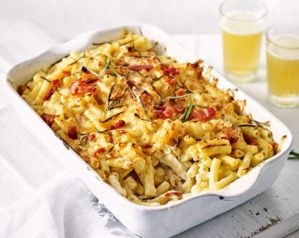

[…] Twice-baked souffles […]